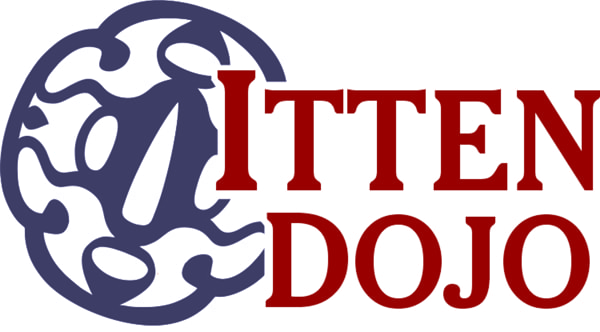Iaido — Japanese Swordsmanship
Our practice of iaido, the art of drawing the Japanese sword to an immediate, defensive technique, is a far more comprehensive study of swordsmanship than you might assume. While many styles of iaido focus exclusively on the practice of solo forms—and many styles of kenjutsu focus exclusively on the practice of choreographed, paired forms—our training includes conditioning exercises, solo and paired practice drills, paired combative forms (kumitachi), a safe and exhilarating form of free-sparring, and even jujutsu (armed grappling) and tameshigiri (“test-cutting” of straw targets with sharpened, steel swords), in addition to the solo forms.
The solo forms in our iaido are codified answers to the problem of surprise attacks, answers developed hundreds of years ago by Japanese warriors that experienced (and survived) such assaults. But even more significantly than the embodied tactical insights, the forms are a study in physical structure and the generation/application of power. Iaido has evolved from these combative roots to become a profound and very personal, transformative practice—iaido can be your path to physical, mental, and spiritual growth!
Purely in terms of physical exercise, iaido can provide a light, moderate, or surprisingly intense workout, at the discretion of the practitioner. Proper iaido training, even at a slow pace, involves virtually every part of the body and can extensively condition the core. At the same time, training can be gauged to provide measured, gentle, and developmental exercise when you are just starting out or if you are dealing with some type of special, physical circumstances. Iaido will improve your posture, body integration and coordination, breathing, and physical presence.
The mental benefits of iaido training can also be quite significant. Ultimately, training will become for you a process of composing and configuring your body and attention in accordance with an idealized form that can be pursued but never fully attained. This requires a very high level of self-reflection, analysis, and honesty—essentially your ability to identify, consider, and correct what might be substantial or very subtle divergences from the idealized form. Additionally, in iaido practice, your imaginary “attackers” must be visualized in great detail. Otherwise, practice becomes little more than going through the motions, or simply performance art.
Which leads us to the spiritual component of training. If the physical and mental components of training are proper, your practice will facilitate the development of a calm and centered spirit, leading to the ability to respond to the unexpected without loss of composure.
We train in the Muso Jikiden Eishin-ryu style of iaido, an almost 450-year-old school of swordsmanship, under the guidance of visiting instructor Nicklaus Suino and his assistant, Daniel Holland. Suino Sensei is Director of Training at the Japanese Martial Arts Center in Ann Arbor, Michigan, and while living in Japan was All Tokyo Champion for four consecutive years between 1989 and 1992, competing against hundreds of Japanese in their native art of iaido. He’s written four books on Japanese martial arts and consults internationally on strategies for personal and professional growth using the principles of swordsmanship. An excellent video of Suino Sensei demonstrating advanced Eishin-ryu waza (techniques) can be seen here.
In October 2025, members of Itten Dojo visited Japan and had the opportunity to train at the Iai Shinbukan, the dojo located at the Hayashizaki Jinja, the shrine that was the birthplace of iaido.
Iaido classes are held Mondays, Tuesdays (advanced students), and Thursdays from 6:00 to 7:15 p.m., Wednesdays from 11:30 a.m. to 1:00 p.m., and Saturdays from 9:00 to 10:30 a.m. Persons applying to train in iaido must be aged 14 years or older. The required uniform and equipment can be obtained through the dojo or ordered online—we will provide recommendations.
Call or email today for an appointment and come see for yourself — visitors are always welcome!
